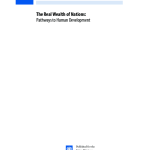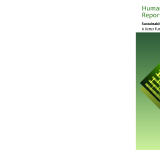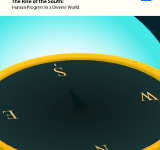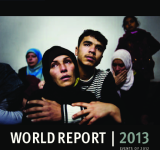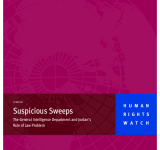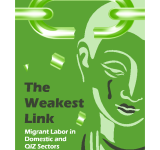human
The 2011 Human Development Report argues that the urgent global challenges of sustainability and equity must be addressed together – and identifies policies on the national and global level that could spur mutually reinforcing progress towards these interlinked goals. Past Reports have shown that living standards in most countries have been rising - and converging - for several decades now. Yet the 2011 Report projects a disturbing reversal of those trends if environmental deterioration and social inequalities continue to intensify;; with the least developed countries diverging downwards from global patterns of progress by 2050. The Report shows further how the world's most disadvantaged people suffer the most from environmental degradation;; including in their immediate personal environment;; and disproportionately lack political power;; making it all the harder for the world community to reach agreement on needed global policy changes. The Report also outlines great potential for positive synergies in the quest for greater equality and sustainability;; especially at the national level. The Report further emphasizes the human right to a healthy environment;; the importance of integrating social equity into environmental policies;; and the critical importance of public participation and official accountability. The 2011 Report concludes with a call for bold new approaches to global development financing and environmental controls;; arguing that these measures are both essential and feasible.
The 21st century is witnessing a profound shift in global dynamics;; driven by the fast-rising new powers of the developing world. China has overtaken Japan as the world's second biggest economy;; lifting hundreds of millions of people out of poverty in the process. India is reshaping its future with new entrepreneurial creativity and social policy innovation. Brazil is raising its living standards by expanding international relationships and antipoverty programmes that are emulated worldwide. But the “Rise of the South” is a much larger phenomenon. Indonesia;; Mexico;; South Africa;; Thailand;; Turkey and other developing countries are becoming leading actors on the world stage. The 2013 Human Development Report identifies more than 40 developing countries that have done better than expected in human development in recent decades;; with their progress accelerating markedly over the past 10 years.
This report consists of eight chapters and aims to summarise the key concepts of human development. It introduces the Human Development Index;; provides an overview of Jordan's human development achievements;; examines the regional vulnerability context that has constrained Jordan's options in its pursuit of social and economic development;; provides a platform for the poor to express their views and perceptions in relation to their poverty status;; reviews the policies;; institutions and processes that affect the poor;; examines the government's attempts to stimulate entrepreneurialism;; promotes the application of a rights-based approach;; in which all citizen are equally empowered and have the capacity and the appropriate enabling environment that allows them to claim their entitlements according to law. Finally;; the study examines the various reform initiatives in progress and assesses the extent to which Jordan is committed to the process.
This 23rd annual World Report summarizes human rights conditions in more than 90 countries and territories worldwide in 2012. It reflects extensive investigative work that Human Rights Watch staff has undertaken during the year;; often in close partnership with domestic human rights activists.
This 66-page report documents the arbitrary arrest and abusive treatment of detainees held at the General Intelligence Department's (GID) central detention facility in Amman. The report finds that there is no clear basis in Jordanian law for the GID's law enforcement role;; and that detainees cannot seek an independent judicial review of the grounds for arrest and continued detention.
This report is the second annual report of Tamkeen Center for Legal Aid and Human Rights. It addresses the status of both migrant domestic workers and migrant workers in Qualified Industrial Zones because these two categories are subject to recurrent abuses and are the most vulnerable group due to legislative reasons;; administrative practices and the actions of their employers.
بعد الفرار من العنف والاضطهاد في العراق;; فإن مئات الآلاف من العراقيين الذين يعيشون في الأردن يواجهون تهديداً يومياً للإعتقال والغرامات والترحيل وذلك لأن الحكومة الأردنية تعاملهم معاملة المهاجرين غير الشرعيين بدلاً من معاملتهم كلاجئين. منذ بدء الحرب في العراق في عام 2003;; نزح أكثر من مليون عراقي من بلدهم طلباً للجوء من البلدان المجاورة;; إلا أنه لا يوجد أي من الدول المجاورة للعراق;; ولا الولايات المتحدة;; يعاملونهم كلاجئين. وهذا التقرير يلقي الضوء على محنة اللاجئين العراقيين (والتماس الحلول له) وهي مسؤوليةً مشتركة بين الأردن والدول المجاورة والمجتمع الدولي.
